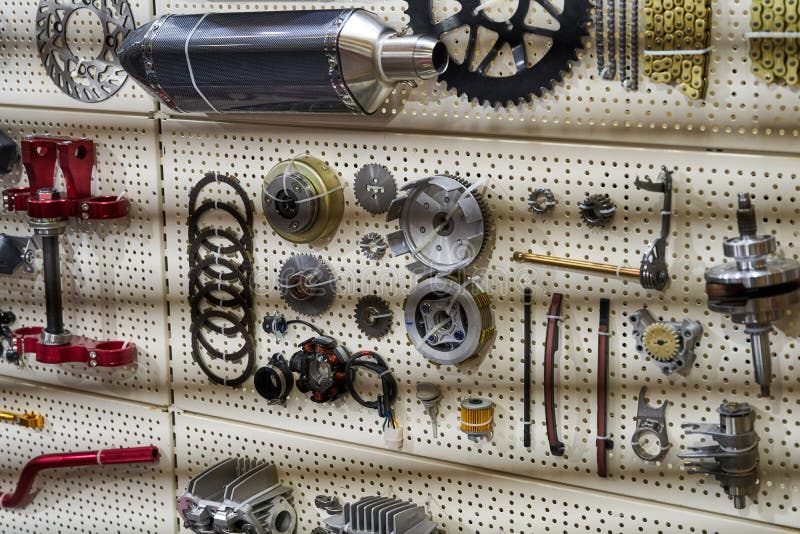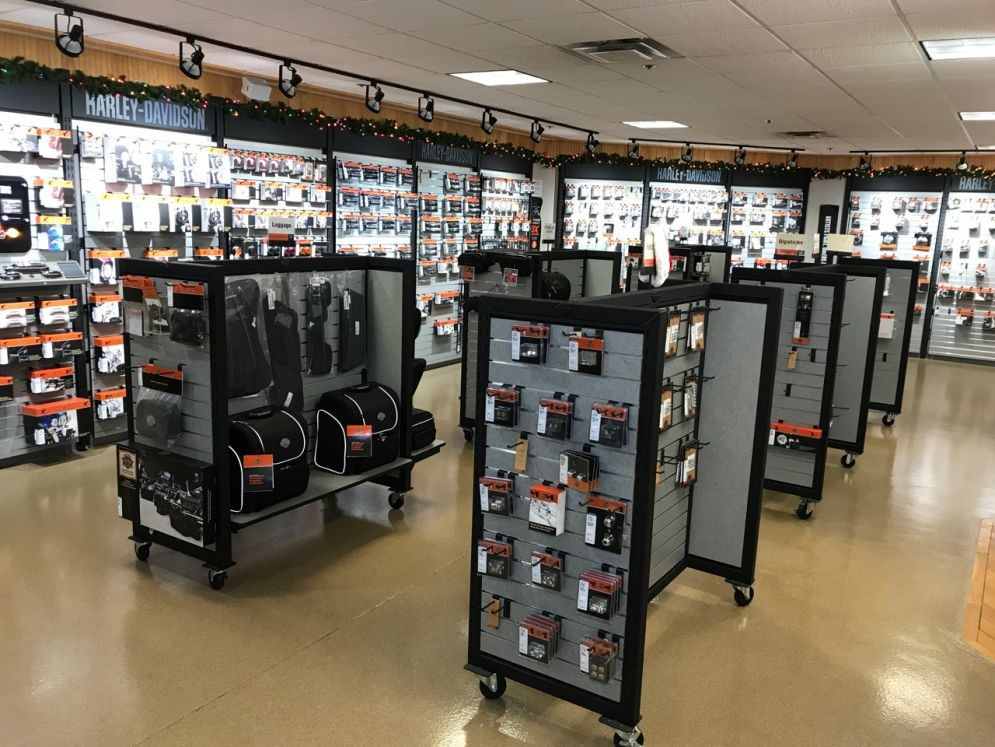Must-Have Motocross Gear: Elevate Your Riding Experience Today
Must-Have Motocross Gear: Elevate Your Riding Experience Today
Blog Article
Understanding the Important Parts of a Motorcycle: A Comprehensive Guide for Lovers
For bike fanatics looking to elevate their riding experience and ensure their bikes run smoothly, comprehending the important elements of a motorcycle is vital. Each component, from the engine's intricate workings to the critical function of the stopping systems, not just affects efficiency but additionally safety and security and comfort.
Engine Elements

The camshaft plays a crucial function in regulating the timing of the engine's valves, making certain the exact opening and closing required for efficient gas and air consumption, as well as exhaust expulsion. This timing is important to keeping optimum engine performance and effectiveness. In addition, the carburetor or gas injection system, depending on the motorbike design, is in charge of blending air with fuel in the proper ratio for burning.
The cooling system, either air or liquid-based, works to preserve the engine's temperature within functional restrictions, avoiding getting too hot and making certain durability - motocross gear nz. Each component, diligently created and incorporated, adds to the smooth operation of the engine, specifying the motorcycle's power output and general performance
Transmission System
Essential to the motorcycle's functionality, the transmission system ensures efficient power transfer from the engine to the wheels. This system makes up several critical elements, consisting of the clutch, gearbox, and last drive, each playing a crucial function in equating the engine's power right into motion. The clutch, commonly run by a hand bar, serves to engage and disengage the engine from the transmission, permitting smooth equipment changes and controlled acceleration.
The gearbox, usually referred to as the transmission correct, includes a set of equipments that motorcyclists can manually shift through to adjust the bike's speed and torque result. These gears are set up in a sequence that enables the motorcycle to accelerate efficiently and maintain optimum engine performance across various speeds. A lot of motorbikes utilize a consecutive transmission, requiring the motorcyclist to move equipments in an established order.
Braking Devices
While comprehending the transmission system is key to taking advantage of a motorcycle's power, equally crucial is the ability to regulate and stop that power properly, which is where stopping mechanisms enter play. Brakes are critical for safety and performance, supplying the biker with the required control to navigate various terrains and problems. Generally, bikes include 2 kinds of stopping systems: disc brakes and drum brakes.
Disc brakes are a lot more widespread in contemporary motorcycles due to their superior performance. They contain a brake disc, caliper, and pads. When triggered, the caliper presses the brake pads against the rotating disc, converting kinetic energy into warm, thereby slowing down the wheel. This system uses far better warm dissipation, regular efficiency, and enhanced stopping power, specifically in damp problems.
On the other hand, drum brakes, though much less typical, are still discovered in some motorcycles. They function here by pressing brake shoes against the inner surface of a drum attached to the wheel. While typically much less effective in warm dissipation and stopping power, drum brakes are less complex and more economical.
Understanding these braking systems' subtleties permits riders to preserve their motorbikes appropriately and value the engineering that makes sure secure and effective quiting.
Suspension and Steering
Suspension and guiding systems are vital components that substantially influence a bike's handling and adventure convenience. The suspension system, including forks at the front and shock absorbers at the back, takes in road abnormalities, boosting stability and control. Front forks, normally telescopic or inverted, compress and rebound to minimize effects, while back shock absorbers maintain tire contact with the road, important for grip and security.
Guiding, focused around the handlebars, connects the cyclist to the motorbike's directional control. The steering head bearings make sure smooth operation, enabling exact maneuverability. Discover More Correct alignment and upkeep of these bearings are important for predictable guiding response and reducing motorcyclist tiredness.
The suspension's adjustability is another essential facet; preload, damping, and rebound setups enable modification to suit different riding designs and conditions. This adaptability is essential for maximizing performance, whether navigating metropolitan streets or dealing with rugged routes. Advancements like electronic shock absorber supply real-time modifications, enhancing adventure high quality across varied surfaces.

Electrical Equipments
After making certain a smooth and controlled trip via effective suspension and guiding systems, attention turns to the electrical systems, a critical facet of modern-day bikes. These systems play a critical duty not just in beginning the engine but also in powering various components that improve the capability and safety of the motorbike.
At the heart of a bike's electrical system is the battery, which shops electric energy required for starting the engine and powering auxiliary systems - motorcycle parts nz. The generator or generator, coupled with the rectifier-regulator, ensures the battery remains billed while the bike functions, transforming mechanical energy right into electric power and preserving voltage degrees
The ignition system, an additional crucial component, is in charge of firing up the air-fuel mixture in the engine's cylinders. Modern motorcycles frequently use an electronic ignition system, providing greater effectiveness and integrity compared to conventional systems.
Lighting systems, including headlights, Visit Website tail lights, and indicators, are also crucial, guaranteeing visibility and security for the motorcyclist. Additional digital components such as sensing units, control systems, and presents add to sophisticated functions like gas injection management, anti-lock stopping systems (ABDOMINAL), and electronic dashboards, even more boosting the riding experience.
Conclusion
A detailed understanding of a bike's necessary elements, consisting of the engine, transmission system, stopping mechanisms, suspension, guiding, and electrical systems, is essential for lovers intending to maximize safety, efficiency, and convenience. Proficiency of these elements enables notified choices relating to upkeep and upgrades, eventually enhancing the riding experience. By incorporating this knowledge, bikers can ensure their motorbikes operate at peak efficiency and dependability, consequently optimizing both satisfaction and longevity of their lorries.
For motorcycle fanatics looking to raise their riding experience and guarantee their bikes run smoothly, comprehending the crucial elements of a motorbike is paramount.Integral to the bike's performance, the transmission system ensures effective power transfer from the engine to the wheels.While recognizing the transmission system is crucial to taking advantage of a motorbike's power, just as vital is the capability to regulate and quit that power properly, which is where braking mechanisms come right into play. Usually, motorcycles include two kinds of stopping systems: disc brakes and drum brakes.
A detailed comprehension of a motorcycle's crucial parts, including the engine, transmission system, stopping mechanisms, suspension, steering, and electrical systems, is indispensable for fanatics intending to enhance safety and security, comfort, and efficiency.
Report this page